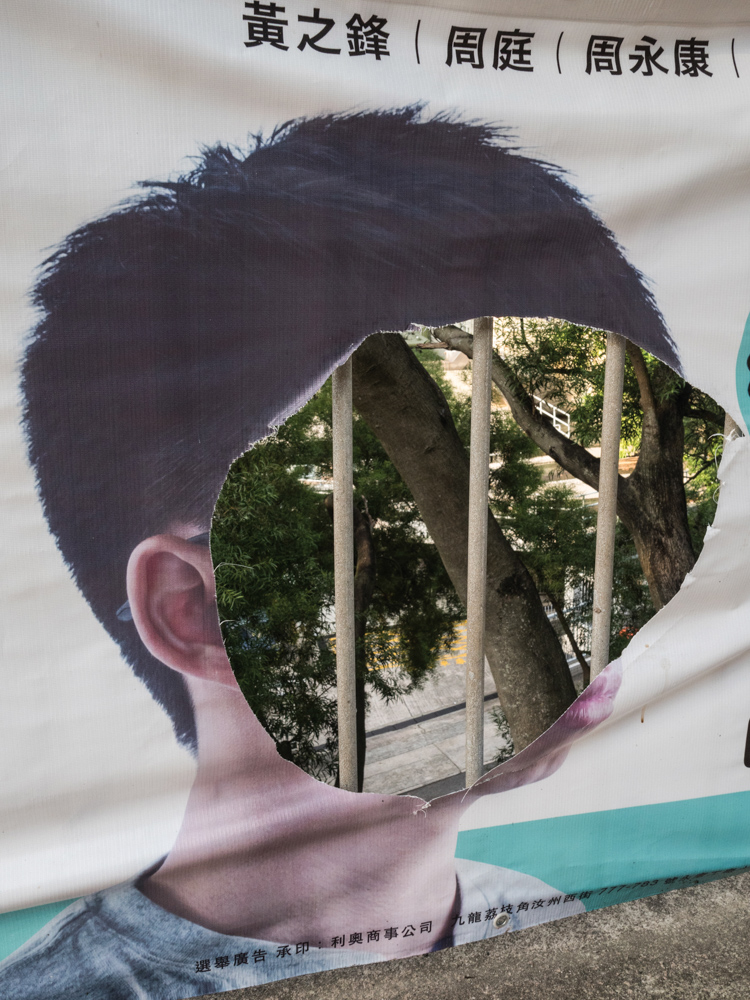After completing a Ph.D. in Biomechanics, Pierfrancesco is now concentrating his attention on a series of personal long-term photographic projects documenting life in modern cities. He won the Guernsey Photography Festival International Competition (2020), PHmuseum Photography Grant (runner up, 2020), Happiness Onthemove Award (2017), EPEA’03 (2015), the Photolux Leica Award (2014), and the Ideastap and Magnum Photos Photographic Award (2010). His work has been exhibited and published internationally, including FT Weekend Magazine, Capital Magazine, Bloomberg, Newsweek, Vogue, Time Lightbox, i-D, Amica, D-Repubblica, Leap magazine. He is based in Hong Kong since 2014.



When I feel down I take a train to the Happy Valley
With more than seven million people, Hong Kong is one of the most densely populated cities in the world; a multicultural environment with a mixed collective memory, an intersection of experiences, and a complex sense of belonging. Hong Kong is currently living one of the most delicate moments of its history, facing new growing uncertainties before the “one country, two systems” arrangement will cease to exist in 2046.
I moved to Hong Kong in October 2014, at the beginning of the Umbrella revolution. The movement, while demanding for truly universal suffrage, contributed to further divide public opinion, augmenting anti-mainland sentiments, especially among the younger generations. These sentiments have exploded again in the summer of 2019. The escalating violence and the lack of trust in the government have since polarised public opinion, further deepening Hong Kong’s current identity crisis.
Gili Benita: As a none native Hong Kong person, what drove you to make this
project?
Pierfrancesco Celada: In 2014, I moved to Hong Kong with my family. The move coincided with the
beginning of the Umbrella revolution. Hong Kong, with its density, fitted very well with my previous photographic interests. During these six years, Hong Kong went through some of the most delicate periods of its modern history, including the Umbrella revolution (2014) and the 2019 protests. In between these two major events, there were long periods of quietness, where very little happened. I am interested in these moments equally. My intent was to draw a portrait of a city and its struggles, and ultimately my own experiences.
GB: Do you think being an outsider gave you an advantage in the
documentation of the protests?
PC: Without speaking, the language sometimes wasn’t simple to follow fast-paced and dynamic events. However, being an outsider, it is useful to keep a certain distance between my subjects and the city itself, a distance that fits very well with my visual language.
GB: What are your main inspirations for your work?
PC: I switched to photography in 2010 from engineering. At that time, my photographic interests focused on classic documentary practice. Since then, I have developed my own relationship with photography. Most of the inspiration comes from direct observation, fiction books, and academic papers.
GB: How do you think these images should be used in order to make a
change?
PC: We live in an era of visual abundance. I feel that it is quite unlikely that a series of images could still make a real change in society. Having said that, in this time of fake news, it is extremely important to produce honest and coherent documentation of our society and the way we live.
GB: I see that you used a very particular sequencing in your photo
series, which is almost sorted like a photo book. Please tell us
more about the editing process.
PC: Almost every project, from its initial stage, is thought in a book form. I tend to make dummy books with the material as I go along, even if the project, through the years, may take on different directions. It is also an interesting and tangible way to keep track of the progress you make with the creative process.
GB: In the past summer, we saw the world’s main cities raging with
anti-government demonstrations. Do you think that you could use
the same visual language in the protests in the US and other
countries?
PC: It is not easy to compare demonstrations in different environments. Each city has a different history and motivation. Given the right time to understand the dynamics of a place, it is always possible to find the right visual approach.
GB: What are you working on these days?
PC: For the past two years, I have lived on a small outlying island, just 25 minutes
ferry ride from the city. It is the place where I have spent most of my time during the pandemic. I am currently working on a series of projects on the island. I am also finalizing the last few details of a long-term project, “Instagrampier” that I will be self-publishing in the next months.
GB: What do you want the readers to take away from your photos?
PC: I look for images that do not offer a direct, literal description of events. I like to offer suggestions, almost like metaphors of modern living, something that still needs to be processed by the viewer, raising more questions than answers.









To view more of Pierfrancesco Celada’s work please visit his website.